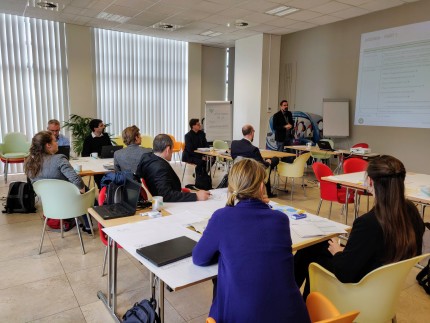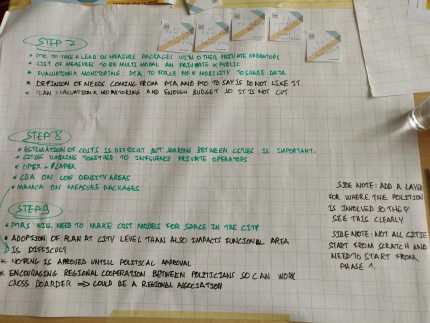SUMP 2.0 GUIDELINES FEEDBACK SESSION WITH UITP & INTERREG CE PROJECTS
12.07.2019
On 6th May 2019, public transport experts from CE countries met in Brussels at the UITP headquarters to give their feedback about the update of the European SUMP Guidelines. These guidelines offer advice to stakeholders who develop a Sustainable Urban Mobility Plan (SUMP) in their municipalities and Functional Urban Areas (FUA). The SUMP Guidelines are presently being updated to include new mobility developments, such as emerging technologies and services, and lessons learned from good SUMP practices. The workshop in Brussels had two objectives. Firstly, to discuss and review the updated SUMP 2.0 core guidelines, especially in light of the role that PT authorities and operators play as the backbone of low-carbon mobility systems in FUAs and secondly, to identify specific challenges and cooperation opportunities for public transport stakeholders in Central Europe.
Public transport authorities and experts offered their feedback of the SUMP 2.0 Guidelines regarding its contextualization for Central Europe. Planning for public transport has had a long tradition in central Europe. Therefore, the CE transport authorities make valuable contributors to the SUMP 2.0 Guidelines. They are usually involved in SUMP processes and are acutely aware of stakeholders’ needs, who themselves may have little to no experience with sustainable urban mobility planning, especially at the FUA level. Consequently, the most important recommendations arising from the workshop aim at including PT data into the SUMP cycle (how to collect and analyze such data); making the SUMP ‘cycle’ comprehensive for different stakeholder groups; and finally indicating the ideal timing of political decisions in each of the four SUMP phases.
Later at the workshop, different project representatives from the Interreg programme area presented their work, and discussed challenges and ideas for future co-operation. The main challenges identified were low cross-border connectivity and missing accessibility of peripheral areas to urban centers. However, new mobility solutions and integrated strategies, including business models, developed in the Central Europe projects… aim at tackling these challenges. Such projects include: LOW-CARB, Peripheral Access; SharePlace; RUNMOBIL; and CIVITAS Prosperity.


